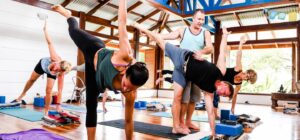Why You Should NOT Do Child’s Pose
Why You Should NOT Do Child’s Pose Child’s Pose, or balasana, is an asana that is nearly inescapable in most yoga classes. You may hear your yoga teacher remind you that child’s pose is a “safe place” to go during… Read More












